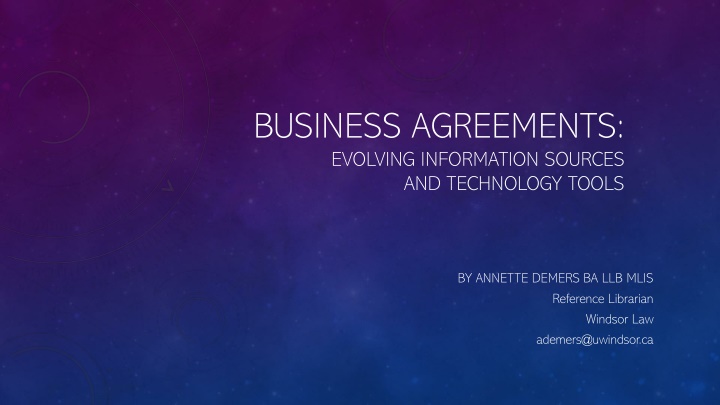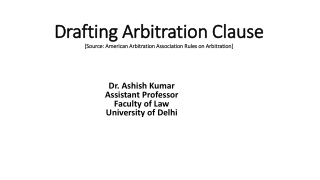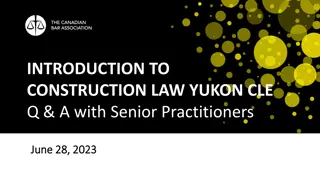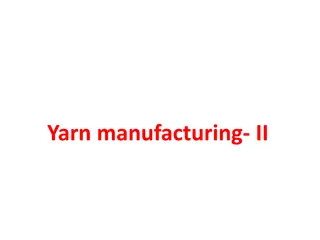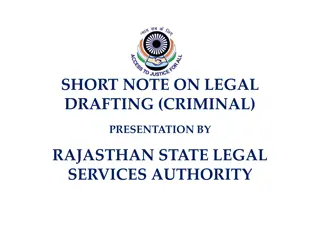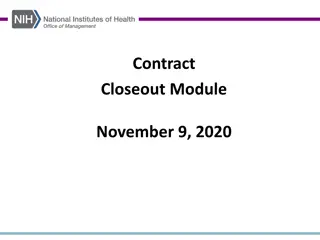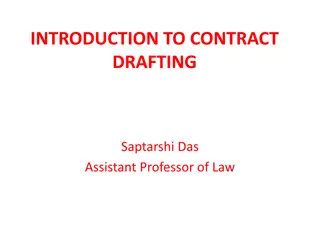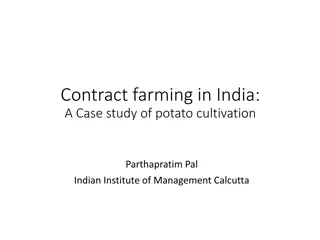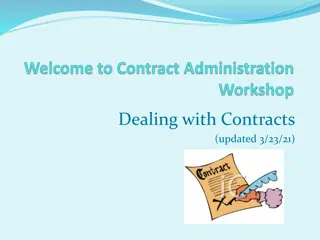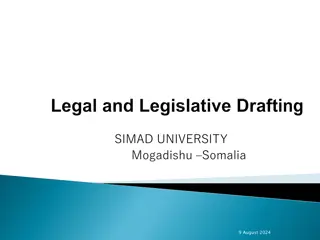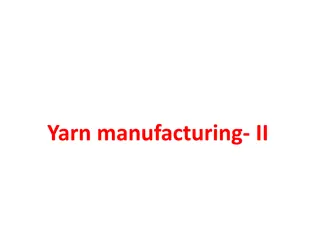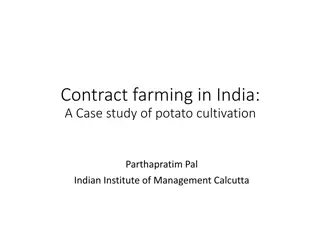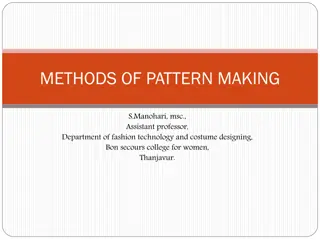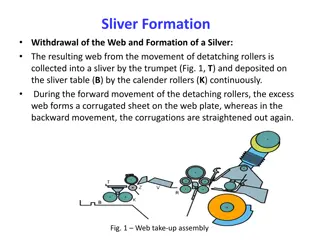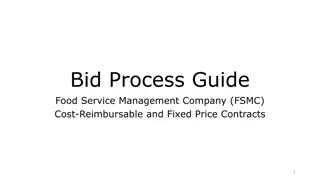Evolving Information Tools for Contract Drafting
"Explore traditional and technology-enhanced tools for contract drafting, focusing on quality data for AI solutions. Learn to navigate current technology tools and ask the right questions when utilizing AI. Discover the importance of maintaining reliable sources and the future integration of AI enhancements with existing resources."
Download Presentation

Please find below an Image/Link to download the presentation.
The content on the website is provided AS IS for your information and personal use only. It may not be sold, licensed, or shared on other websites without obtaining consent from the author.If you encounter any issues during the download, it is possible that the publisher has removed the file from their server.
You are allowed to download the files provided on this website for personal or commercial use, subject to the condition that they are used lawfully. All files are the property of their respective owners.
The content on the website is provided AS IS for your information and personal use only. It may not be sold, licensed, or shared on other websites without obtaining consent from the author.
E N D
Presentation Transcript
BUSINESS AGREEMENTS: EVOLVING INFORMATION SOURCES AND TECHNOLOGY TOOLS BY ANNETTE DEMERS BA LLB MLIS Reference Librarian Windsor Law ademers@uwindsor.ca
OBJECTIVES At the end of this session, you will: -identify traditional tools for contract drafting -identify technology-enhanced tools -understand the importance of quality data for AI-enhanced tools -navigate current technology tools -get curious about evolving AI solutions -know what questions to ask when purchasing or using AI for contract drafting
TRADITIONAL INFO TOOLS FOR THE DRAFTER Textbooks Drafted by expert practitioners and academics. Explain how to draft contract clauses. Tell us how contract clauses have been interpreted by the courts. Also provide appendices with sample documents (precedents). Books and e-books from the law library website.
ELECTRONIC SOURCES Examples Include: Examples Include: Westlaw Edge Canada Practical Law Lexis+ Canada Practical Guidance CCH Answer Connect (for tax) Both Provide: Commentary Precedents Clauses Checklists
USING PRECEDENTS 1. Is it marked as MAINTAINED? If not, don t use it. 2. View resource history. 3. Related content. 4. Review the preliminary information. 5. Review: NOTE: READ THIS BEFORE USING DOCUMENT . NOTE: READ THIS BEFORE USING DOCUMENT .
NOW AND INTO THE FUTURE 1. You ll still need textbooks. 2. Not all practice-related databases cover all legal topics. 3. The Westlaw and Lexis+ tools are now old technology and most well-established, accessible and economical. 4. AI enhancements are coming; you ll need these too. You (student) You (Associate) You (Senior Partner) Books / online tools Books / online tools + AI beta AI verified by books / online tools
AI IS BUILT ON THESE TOOLS 1. AI Enhancements are built on quality data sources such as: -commentary and textbooks -precedents -practice notes -clauses -checklists 2. Practitioners still need these sources for: -verifying content -researching legal topics for which there is no AI solution
AI ENHANCED CONTRACT DRAFTING Free For Students: Lexis+ Brief Analysis: https://youtu.be/tqkc_wvldmo Lexis+ Automated Templates: https://youtu.be/XUkEDjfZD00 By Subscription: Thomson Reuters Contract Express: https://www.youtube.com/watch?v=3g-lv_ixwp0 Thomson Reuters AI Assistant Transactional: https://youtu.be/jl561i8lwvg Contract Management Software Providers: https://www.capterra.ca/directory/30078/contract-management/software?countries[]=ca
DUE DILIGENCE 1. Was the product built on Canadian legal data sources?: a. Does the dataset contain legal information for the feds as well as all provinces and territories? b. Does the dataset include statutes? c. Does the dataset include case law? i. If so, for what courts? ii. If so, what is the date range covered (what is start year for historical coverage and end year for current coverage?) iii. How fast is the current data updated? iv. How does the AI make use of updated data?
DUE DILIGENCE 2. Was the AI trained using human supervision? a. Is the output supervised or reviewed by a human before you receive it? b. Is the AI using input questions for further training? i. If so, how is your client s privacy protected? 3. Does the system provide detailed prompts targeting your client s situation or purport to apply the law to a particular client s facts; or does it merely state what the law may be.
DUE DILIGENCE 4. Are citations provided to substantiate the output? a. If no, avoid the product. b. If yes, do the citations conform to citation standards that you have been taught, and do they lead to an actual statute or case? c. To evaluate responses, locate one of the cases referenced using an outside platform such as CanLII. i. Was the case findable? ii. Was the case relevant to answering the research question? iii. Review the direct history of the case (ie. use Westlaw) is the case still good law? iv. Review citing references for the case. Is there any negative treatment (distinguished or overruled by a higher level of court) that ought to be explored further? .
DUE DILIGENCE 6. 6. Were there any provisos or conditions provided with the answer to alert the user of possible errors or omissions? 7. Review the terms and conditions of the product itself. Who is liable for damage caused by errors or omissions?
BUSINESS AGREEMENTS: EVOLVING INFORMATION SOURCES AND TECHNOLOGY TOOLS BY ANNETTE DEMERS BA LLB MLIS Reference Librarian Windsor Law ademers@uwindsor.ca
